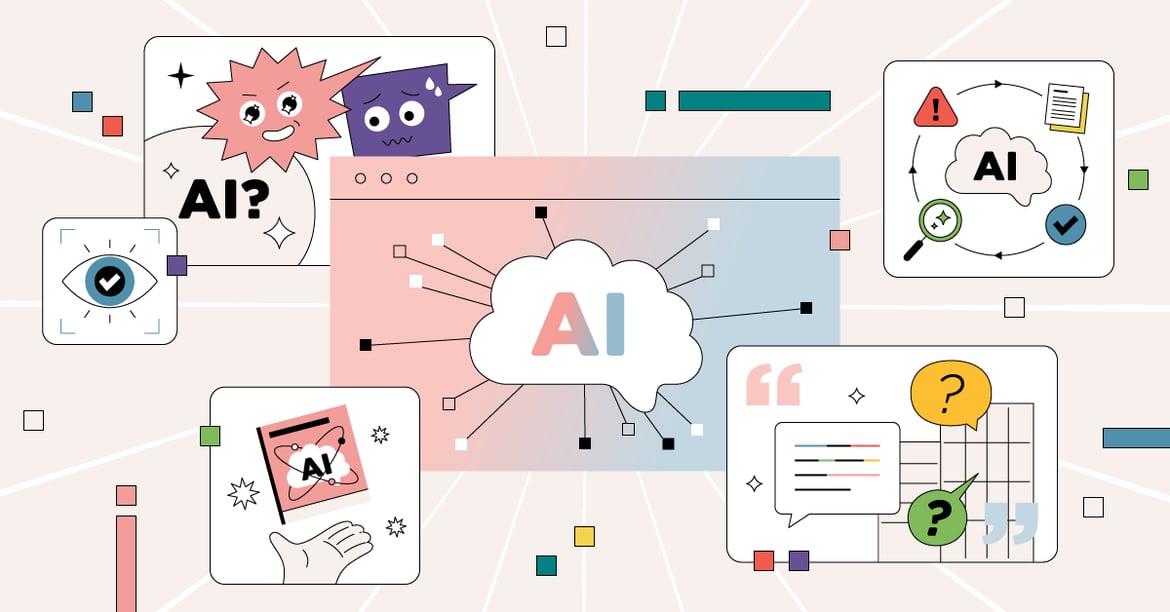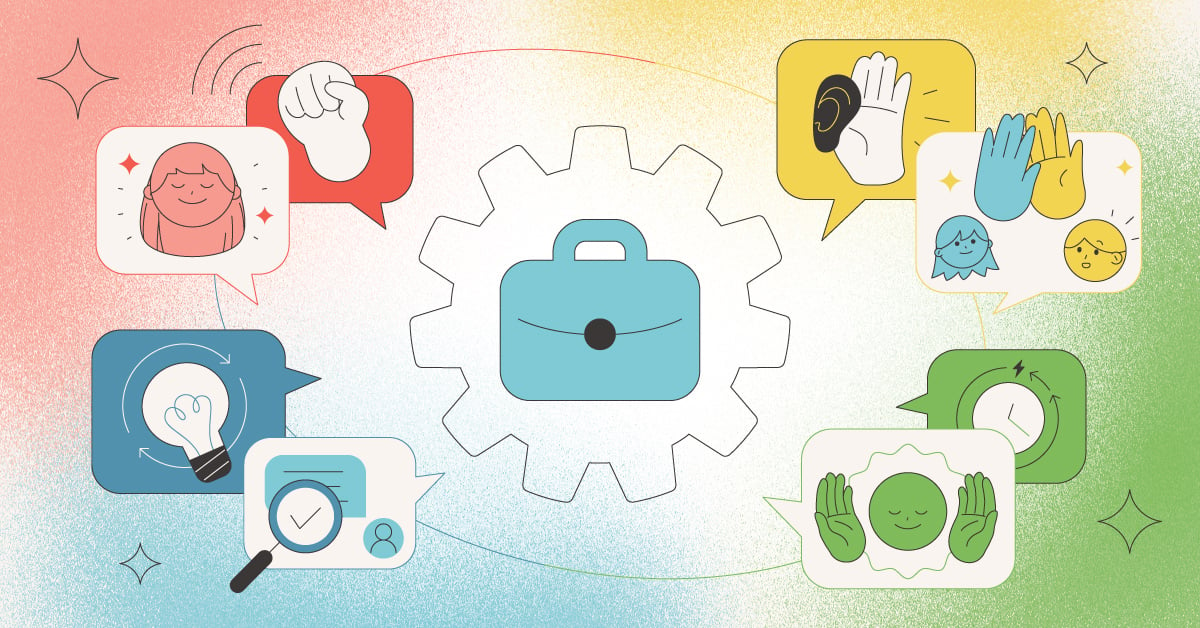
AI has been making a splash in the news for its increasing power, adaptability, and influence in the corporate arena. The potential for progress and changing work processes is exciting but daunting, and many people are distressed over its seemingly-endless possibilities.
If you’re trying to understand AI and what kind of role it can play in your organization, you need to make sure to center the needs of your people first.
What is AI?
“Artificial intelligence is a machine’s ability to perform the cognitive functions we usually associate with human minds,” according to McKinsey and Company. This includes skills like “ perceiving, reasoning, learning, interacting with an environment, problem-solving, and even exercising creativity.”
If you look up ‘top AI tools’, you’ll get all kinds of results. AI can seemingly do it all, from creating artwork to scheduling appointments to writing your grocery list. One of the most popular tools is ChatGPT, a chatbot that pulls on information from the internet to answer questions and complete tasks. ChatGPT was created in November 2022 and quickly broke records, becoming the fastest-growing app of all time.
Asking exactly what AI can do might not be the right question for your organization, especially if your employees are panicking about being replaced or losing opportunities because of it.
Here’s how to focus on people while making decisions about AI in your business.
Do Your Research
Not every organization needs to use AI. Don’t get caught up in the hype and try to force it in your organization! Take time to critically examine areas where you think using AI would improve your workers’ experiences.
If you’re not sure what that might look like, ask your employees. They have likely already heard about how AI is being used in their rules. Find out if they’re enthused or frightened about possible integrations and follow their lead.
Deciding not to move forward with AI might be the right call for your team, but if you would like to give it a try, here are the next steps you should take.
Reassure Your Workers
Having open and honest conversations with your workers is crucial if you want to use AI in your organization. This reassurance should be consistent and ongoing— don’t assume a simple “Don’t worry about it!” will cover their concerns.
Many people are very worried about AI and its repercussions; a 2022 study by Pew Research Center showed that only 18% of surveyed people were more excited than concerned about the increased use of AI in daily life.
Be transparent about how you plan to utilize AI and share those plans with your people— make sure to keep an open channel of communication so employees can ask questions. Try to project any potential changes to those decisions far in advance.
Educate Your Organization
Many people don’t understand what AI is or what it’s capable of. Consider dedicating one person on each applicable team to invest in learning about how AI can help their department. Have them share that information with others and report back on the success or failure of AI in assisting their work.
Encourage your employees to seek out learning opportunities; if someone wants to attend a conference or take a course, support their professional development.
Double Check Your Work
Many people believe that the days of worrying about plagiarism ended when they graduated from school, but that’s not true.
The concept of “cheating” might not apply to every organization, but respecting copyright and properly citing information is still important. It’s difficult to look at data about plagiarism and AI in a professional setting, so let's turn to university students.
“Over half of college students believe that using AI tools like ChatGPT to complete assignments and exams is cheating,” but 89% of those surveyed have used the platform to complete assignments, Forbes reported.
This is important for multiple reasons; those students will eventually enter the workforce and bring their experience and preferences with them. Beyond that, it points out that people are critically examining the tenuous border between cheating and referencing.
If your team is using AI as a writing tool, make sure to have multiple people reviewing work and running it through fact-checkers and plagiarism trackers.
Put Boundaries In Place With AI Use
Establishing boundaries around the use of AI will help with all other aspects of integration. Make it clear when it is appropriate to use and when it is not, and create a protocol around that process.
The use of briefs, regular reporting and troubleshooting, and documented processes with results shared will all help your experience with AI. These boundaries will likely change over time as the technology evolves, but establishing a process now will help you avoid conflict and friction when those changes do arrive.
Focus on Culture
As you learn how to integrate AI, don’t forget to focus on your most valuable asset: your people! Human connection is a crucial part of workplace success, and your employees will be more likely to trust your organization and take risks with experimental technology if they are well supported in other areas of work.
Making sure your benefits are comprehensive and meet the needs of your workers, living your values, and focusing on employee development are all ways to positively contribute to company culture.
Advancing with AI
Critically examining AI is the best way to figure out if it’s a worthwhile investment for your company. As your work through the process outlined here, remember that focusing on people should be your top priority. Take the time to speak with your employees, educate them, explore options together, and move forward with confidence.




